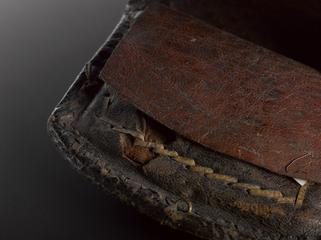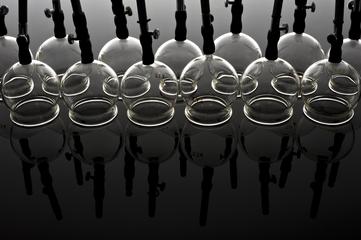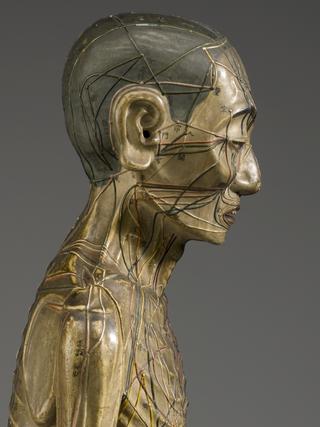






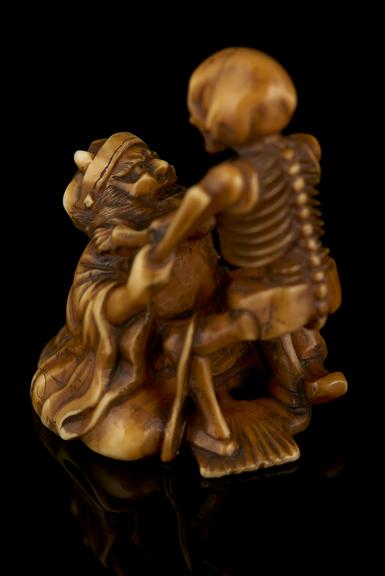


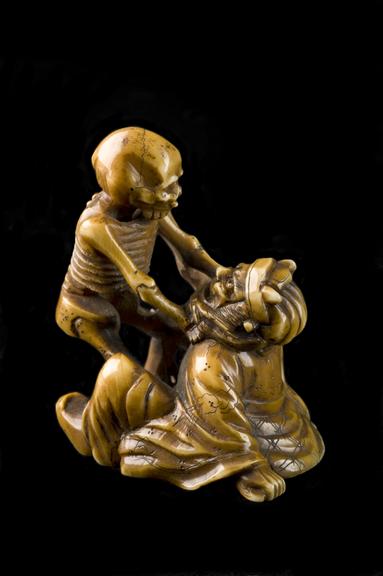
Ivory netsuke, in the form of a skeleton, perhaps representing death, strangling a man, Japanese, 1701-1900
Netsuke are toggle-like ornaments. They hang objects such as medicine boxes or tobacco pouches from the sash of a kimono – a traditional form of Japanese dress. Netsuke carving is a form of miniature sculpture which developed in Japan over several hundred years. They were often beautifully decorated with elaborate carving, lacquer work, or inlays. They were made from wood, ivory or porcelain.
This tiny ivory netsuke was made in Japan. It is in the alarming form of a skeleton attempting to strangle a human-like figure. The figure appears to be either terrified or enraged and the sinister skeleton may represent death, as is common in European art.
Details
- Category:
- Asian Medicine
- Collection:
- Sir Henry Wellcome's Museum Collection
- Object Number:
- A49804
- Measurements:
-
overall: 40 mm x 34 mm x 35 mm, .016 kg
- type:
- netsuke
- credit:
- Glendining

